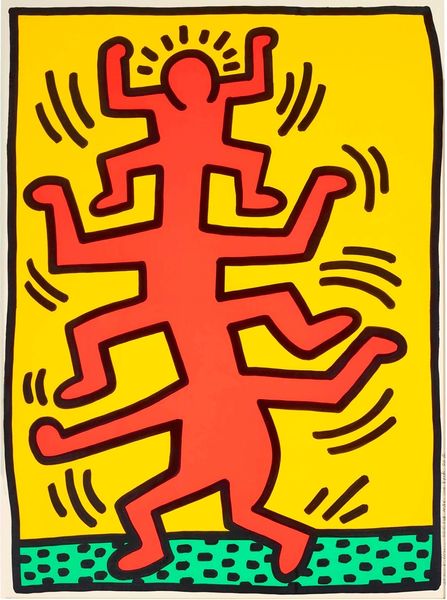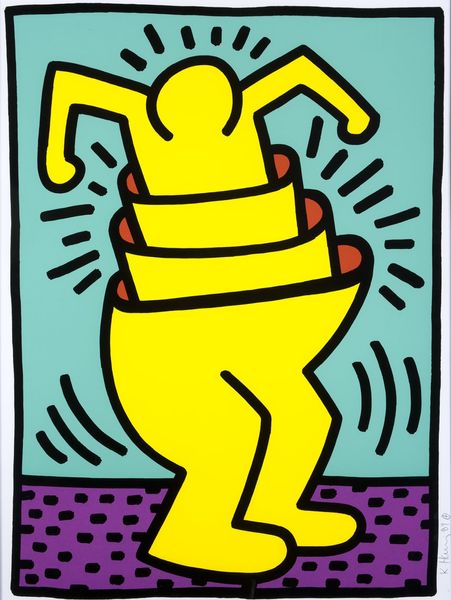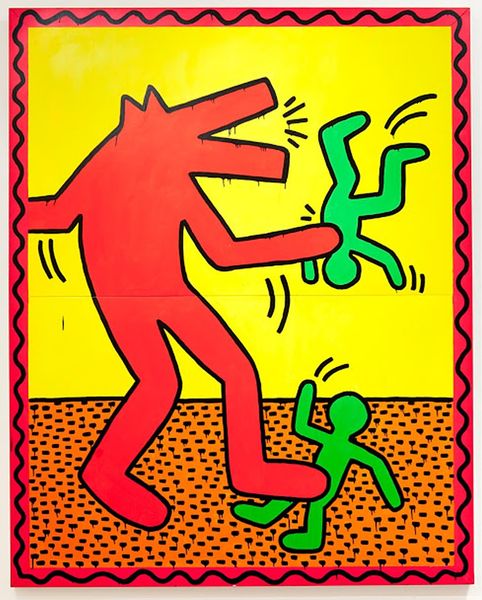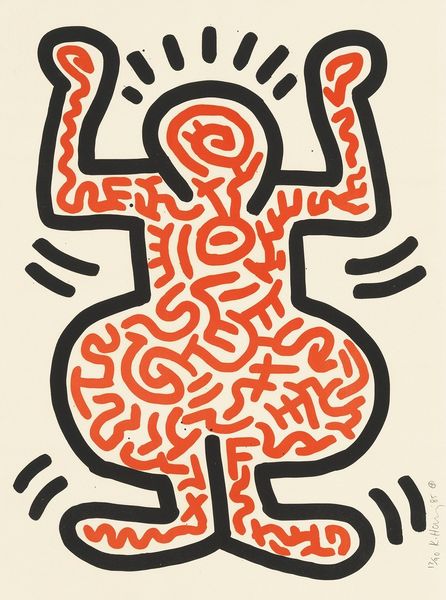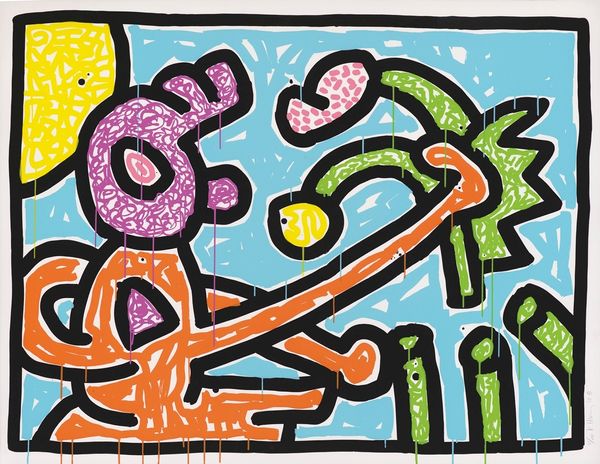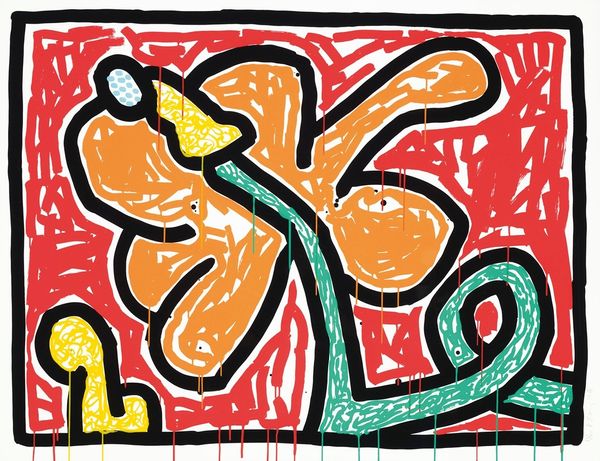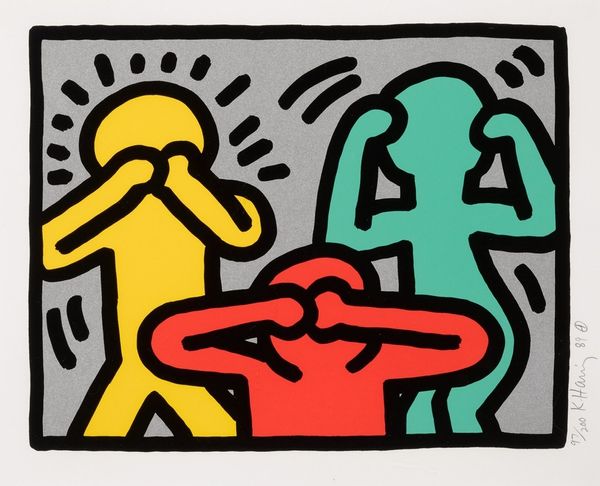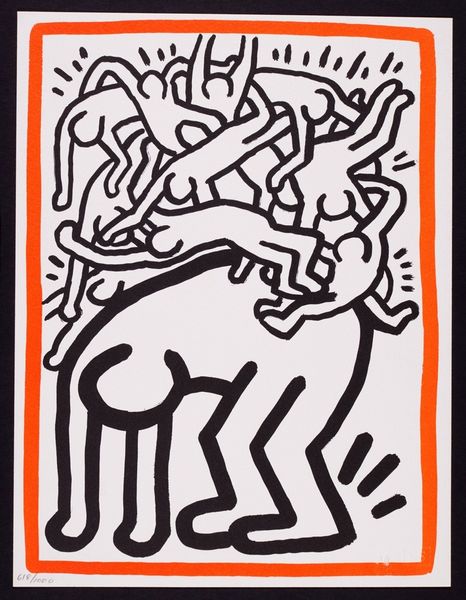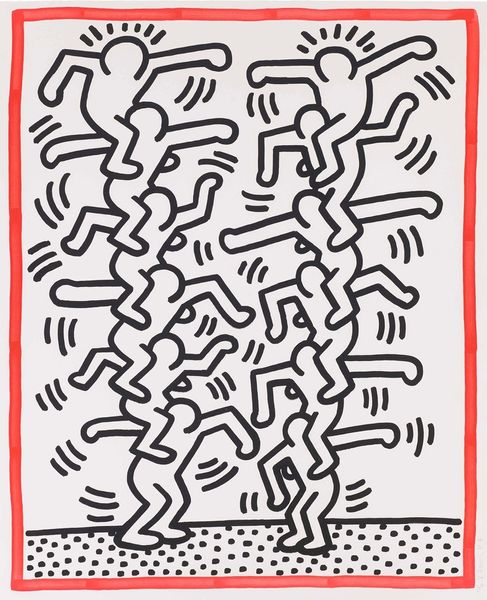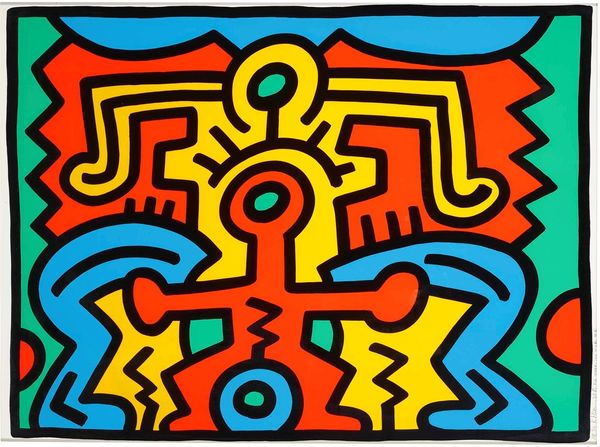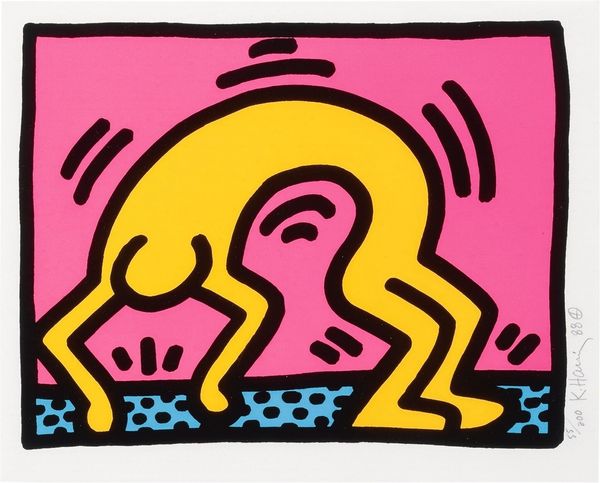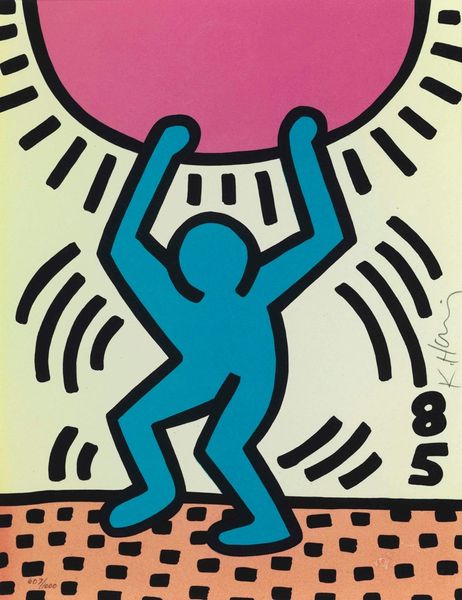
#
neo-pop
Copyright: Modern Artists: Artvee
Curator: Good morning. Today we're looking at Keith Haring's vibrant poster for the 1983 Montreux Jazz Festival. It's a screen print that just pulses with energy. Editor: Absolutely! It hits you like a joyful blast of sunshine. The orange figure against that bold yellow backdrop, framed by the magenta border – it’s pure kinetic happiness, or so it seems on the surface. Curator: It’s interesting you say "on the surface." Tell me more. Haring's work, especially pieces like this, seems to embrace the sheer joy of line and color. Editor: Well, that's true. But looking closer, especially through a lens of accessibility and politics, we know that Haring, while celebrating life, was deeply engaged with addressing serious social issues. Think about the AIDS epidemic raging at the time, issues of censorship, and widespread crack cocaine use. The swirling, almost frantic energy here could be seen as more than just dance, maybe even an anxiety, or struggle. Curator: A fascinating read. The sense of movement created by the dancing figure is so compelling, isn’t it? I always imagine jazz music in visual form when I see this. It's free, uninhibited, and bursting with life. Like someone released from their earthly duties for the sake of pure joy! The lines around the figure intensify this feeling. Do they represent energy, or even sound? Editor: Maybe both? And in true Haring fashion, these elements became part of a shared visual language accessible to everyone regardless of background. This visual language democratized art—it showed up on subway walls and in public spaces, disrupting the often-elite discourse. The repeated figure suggests the power of collectivity. And even though Haring wasn't necessarily addressing explicitly themes of race or gender, his pop art style certainly owes debts to a historically queer sensibility of reclamation and celebration of marginalized identities. Curator: Yes, absolutely. The work feels like a conversation rather than a lecture. There’s a generous quality, an open invitation to participate. I see the beginnings of modern emoji’s here too - so simple, yet so powerful in its immediacy. And of course, Haring was one of the most political and philosophical artists I have come across; not afraid to state the often un-stateable! Editor: Agreed. I think revisiting Haring is particularly vital in our current moment, as our culture becomes increasingly corporatized. His art and life offer a poignant vision for resistance and accessibility through pure artistic energy. It truly does "spark joy", though through more complicated layers of engagement and meaning-making than first appearances might convey.
Comments
Join the conversation
Join millions of artists and users on Artera today and experience the ultimate creative platform.
